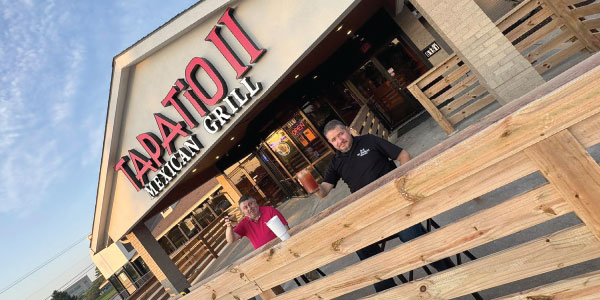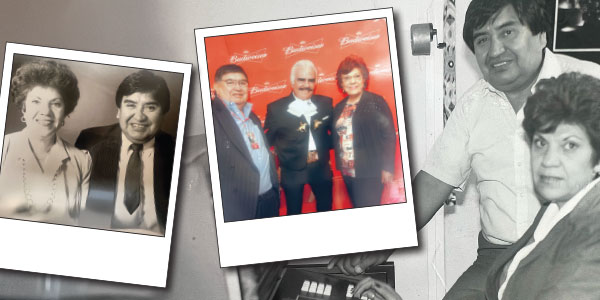
By Roberta Pardo
Enrique Ramirez remembers watching St. Jude Children’s Research Hospital commercials on television with his wife and wondering how the hospital gets families to be featured in them.
Ramirez always thought as an outsider. He never imagined he would become one of those families.
But in 2009, Ramirez’s 3-year-old daughter was diagnosed with atypical teratoid rhabdoid tumor, a rare type of brain cancer that only appears about 38 times a year.
At the time, the family had returned to the United States from Japan, where Ramirez, who was in the Navy, and his family had lived because of his work. They came back to a military hospital in San Antonio, where his daughter, Arianna, had her first brain surgery.
The doctors there were not too optimistic and told him Arianna would not make it to her fourth birthday. So Ramirez and his wife started researching other options online. They found St. Jude.
“Everywhere we looked online, the literature and the research led to St. Jude,” he said. “We thought (St. Jude) would afford her the best opportunity to fight this thing.”
Arianna had her second brain surgery at St. Jude. Then, she went through radiation therapy and chemotherapy. All free of charge.
“In March 2010, Arianna was cancer-free, which is something we never thought would ever happen,” said Ramirez.
Arianna, however, relapsed in July 2011. Ramirez said another mass in her brain and her spine was found during a routine checkup. St. Jude found an experimental chemotherapy treatment. Arianna was the first patient with her type of cancer to receive it.
“Thanks to St. Jude, we were able to buy her another two to three years from (her relapse),” he said.
Arianna passed away in March 2014.
“But we got, if we count from diagnosis, about five years that we wouldn’t have got elsewhere – and we truly believe, had we not come to St. Jude, we wouldn’t have had those five years,” he said. “We look at that time as a very precious time, and we forever feel indebted to St. Jude for that time.”
Today, Ramirez works at St. Jude in the patient engagement team of the fundraising and awareness organization for the hospital: American Lebanese Syrian Associated Charities.
“I absolutely love (working as a patient liaison) because I get to deal with families like mine,” he said.
Ramirez believes it is important to raise awareness about childhood cancer because it is not as rare as people think. He said it is equally important to support organizations like St. Jude, where families do not pay for treatment, housing or food, so that parents can focus on helping their children.
The one piece of advice Ramirez would give is the same one he received from a father who had just lost his son to cancer when Arianna relapsed: “Never mourn a living child.”
“It … (didn’t) matter how sad or how crappy our situation was, the fact was that she was still there – and as long as she was there, we were going to do everything we … (could) to put a smile on her face,” he said. “That’s how we lived from the moment she relapsed. … We chose to live life to the fullest.”
For more information about childhood cancer or St. Jude’s work, visit stjude.org.
Padre comparte experiencia con el cáncer infantil, buscando crear conciencia
Enrique Ramírez recuerda ver los comerciales de Hospital de Investigación Infantil St. Jude en televisión con su esposa y se preguntaba cómo el hospital logra que las familias aparezcan en ellos.
Ramírez siempre pensó como un extraño. Nunca imaginó que se convertiría en una de esas familias.
Pero en 2009, a la hija de 3 años de Ramírez se le diagnosticó un tumor teratoideo/rabdoide atípico, un tipo raro de cáncer cerebral que sólo aparece unas 38 veces al año.
En ese momento, la familia había regresado a los Estados Unidos desde Japón, donde Ramírez, que estaba en la Marina, y su familia habían vivido debido a su trabajo. Regresaron a un hospital militar en San Antonio, donde su hija, Arianna, tuvo su primera cirugía cerebral.
Los médicos allí no eran muy optimistas y le dijeron que Arianna no llegaría a su cuarto cumpleaños. Entonces Ramírez y su esposa comenzaron a investigar otras opciones en línea. Encontraron a St. Jude.
“En todas partes que buscábamos en línea, la literatura y la investigación conducían a St. Jude”, dijo. “Pensamos que (St. Jude) le daría la mejor oportunidad para luchar contra esta enfermedad”.
Arianna tuvo su segunda cirugía cerebral en St. Jude. Luego, se sometió a radioterapia y quimioterapia. Todo gratis.
“En marzo de 2010, Arianna estaba libre de cáncer, que es algo que nunca pensamos que sucedería”, dijo Ramírez.
Arianna, sin embargo, recayó en julio de 2011. Ramírez dijo que se encontró otra masa en su cerebro y su columna vertebral durante un chequeo de rutina. St. Jude encontró un tratamiento de quimioterapia experimental. Arianna fue la primera paciente con su tipo de cáncer en recibirla.
“Gracias a St. Jude, pudimos comprarle otros dos a tres años desde (su recaída)”, dijo.
Arianna falleció en marzo de 2014.
“Pero tuvimos, si contamos desde el diagnóstico, unos cinco años que no hubiéramos tenido en ningún otro lado, y realmente creemos que si no hubiéramos venido a St. Jude, no hubiéramos tenido esos cinco años”, dijo. “Vemos ese momento como un tiempo muy valioso, y siempre nos sentimos en deuda con St. Jude por ese tiempo”.
Hoy, Ramírez trabaja en St. Jude en el equipo de participación de pacientes de la organización de recaudación de fondos y sensibilización para el hospital: American Lebanese Syrian Associated Charities.
Ramírez cree que es importante crear conciencia sobre el cáncer infantil porque no es tan raro como la gente cree. Dijo que es igualmente importante apoyar organizaciones como St. Jude, donde las familias no pagan por el tratamiento, la vivienda o la comida, para que los padres puedan concentrarse en ayudar a sus hijos.
El único consejo que daría Ramírez es el mismo que recibió de un padre que acababa de perder a su hijo por cáncer cuando Arianna recayó: “Nunca llores a un niño vivo”.
“No … importaba cuán triste o cuán horrible fuera nuestra situación, el hecho era que ella todavía estaba allí, y mientras estuviera allí, íbamos a hacer todo lo que … (pudiéramos) para hacerla sonreír”, dijo. “Así vivimos desde el momento en que ella recayó. … Elegimos vivir la vida al máximo”.
Para obtener más información sobre el cáncer infantil o el trabajo de St. Jude, visite stjude.org.










